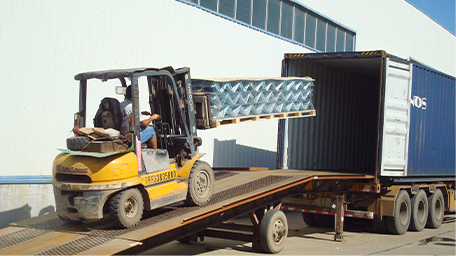
- Mobile Phone
- +8613931874955
- sales@cntcmetal.com
Design and Applications of V-Shaped Torsion Springs in Mechanical Engineering
Understanding V-Shaped Torsion Springs Design, Applications, and Benefits
Torsion springs are essential mechanical components utilized across various industries due to their ability to store and release rotational energy. Among the different types of torsion springs, V-shaped torsion springs have gained popularity for their unique design and functional advantages. This article explores the characteristics, applications, and benefits of V-shaped torsion springs.
What are V-Shaped Torsion Springs?
V-shaped torsion springs are a specific design of torsion springs that feature a V-like configuration. This geometry not only provides structural integrity but also optimizes the spring's performance in critical applications. Unlike conventional torsion springs, which may be circular, V-shaped springs exhibit a distinct design that allows for greater flexibility and stability in movement.
The design of these springs is characterized by two curved arms that extend from a central axis, forming a V. This shape is effective in creating uniform torque, making them particularly useful in situations where consistent force application is required. V-shaped torsion springs can be manufactured from a variety of materials, including stainless steel and carbon steel, ensuring durability and resilience in different environments.
Applications of V-Shaped Torsion Springs
V-shaped torsion springs are utilized in a wide range of applications due to their excellent performance characteristics. Some common applications include
1. Automotive Industry In vehicles, V-shaped torsion springs are used in mechanisms such as hoods, doors, and retractable seats. Their capability to provide reliable tension and maintain positions is crucial in ensuring the proper functioning of these components.
2. Consumer Electronics Many electronic devices, including laptops and phones, employ V-shaped torsion springs in their hinges. The springs allow smooth opening and closing motions while retaining the necessary tension for stability.
3. Industrial Machinery V-shaped torsion springs play a vital role in various industrial applications, such as in conveyor systems, robotics, and automated machinery. They offer consistent torque and reliability, ensuring efficient operation.
v shaped torsion springs

4. Furnishing and Design Furniture designs often incorporate V-shaped torsion springs in mechanisms like reclining chairs and adjustable tables. The springs provide the required support and flexibility for various seating positions.
Benefits of V-Shaped Torsion Springs
The unique design of V-shaped torsion springs comes with several benefits
- Improved Load Distribution The V-shape allows for even distribution of stress when under load, reducing the risk of failure and enhancing the longevity of the spring.
- Compact Design The compact form factor of V-shaped torsion springs makes them suitable for application in tight spaces where traditional springs may not fit.
- Enhanced Performance The geometry of V-shaped torsion springs provides a higher torque output at lower angles, making them efficient for applications requiring tight movement control.
- Versatility Their adaptability to various environments and applications makes V-shaped torsion springs a versatile choice for engineers and designers.
Conclusion
V-shaped torsion springs are a remarkable innovation in the world of mechanical components. Their unique shape not only enhances performance but also provides numerous advantages across various applications. As industries continue to evolve, the demand for reliable and efficient mechanical solutions like V-shaped torsion springs will undoubtedly grow, making them an integral part of modern technology and design. Whether in automotive, electronics, or industrial machinery, these springs exemplify the synergy between engineering and practical application.
share:
-
Your Source for Concrete Wall Ties and Masonry AccessoriesNewsJul.10,2025
-
Unlocking the Power of Iron Wire for Every ProjectNewsJul.10,2025
-
Explore Advanced Chain Wire and Stainless Steel Mesh FencingNewsJul.10,2025
-
Discover the Benefits of Annealed Wire ProductsNewsJul.10,2025
-
Discover China Stainless Steel Wire Mesh SolutionsNewsJul.10,2025
-
Build with Confidence Using High-Performance Masonry AccessoriesNewsJul.10,2025
-
Why Sacrificial Formwork Is Redefining Underground ConstructionNewsJun.06,2025



















